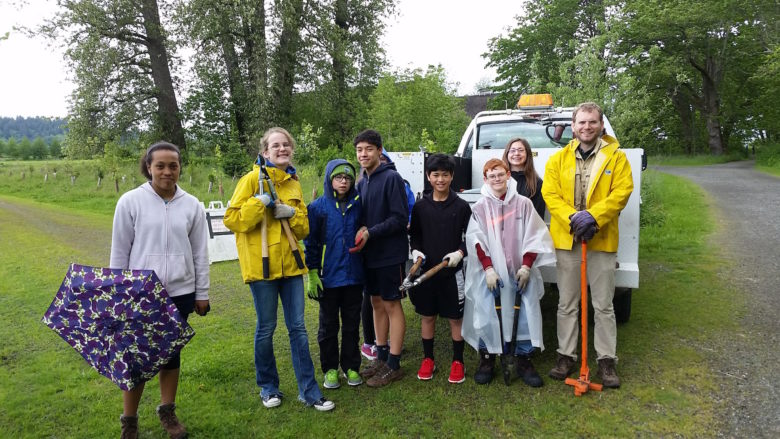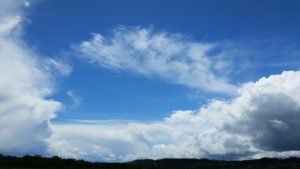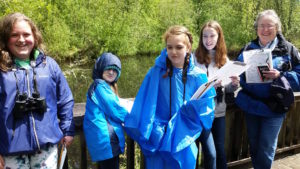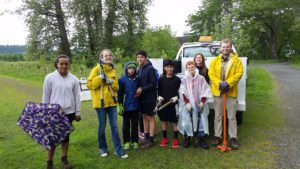The Nisqually River Education Project, South Sound GREEN and Chehalis Basin Education Consortium are offering the first ever Climate Resiliency Fellows. This program aims to build a dynamic community of engaged teachers committed to engaging their students in learning about and taking action in local climate change issues and climate resiliency projects. The Fellows program is offered as a part of a 3 year, environmental literacy program supported by NOAA. Teachers in the program meet quarterly to receive curriculum support and brainstorm ideas for action projects that address local issues. Tom Condon is a teacher at Marshall Middle School and one of our Fellows participating this year. Here, he shares his class’ experiences during their third and final seasonal field trip to the Billy Frank Jr. Nisqually National Wildlife Refuge (BFJNNWR). Thank you, Tom, for a great blog!
49 degrees with Blustery winds and waves of rain and hail interrupted by intermittent sun breaks. Caught in the open dike path of the old Brown Farm beyond the Twin Barns I take refuge with a couple from China visiting our backyard Billy Frank Jr. Nisqually Wildlife Refuge. Puget Sound’s largest reclaimed estuary, what we need more of for our Salish Sea’s future. Swirling waves of wind and hail give up to a welcome warm Sun just as a mature Bald Eagle passes overhead with a large stick in tow, doubtless for his nest. Blooming purple lupine, songbirds, among them a sighting of the beautiful Western Tanager. It must be spring. Yes, the songbirds have returned and so have we the Citizen Science Institute of Marshal Middle School for our third and final seasonal visit of the year. Today, the 50 CSI students and the Friends of Nisqually Volunteer Docents broke into one of three self selected investigations. One group of 10 brave adolescents took aim with the perennial battle of the invasiveHimalayan BlackBerry. Another group of 15 students took the long hike along the historic dike to bear witness to the spot where the Medicine Creek Treaty was signed in 1854. The remaining 24 students broke into groups of 4 to sight and record their data of migratory and resident birds to be input in E-Bird, a Citizen Science data portal created by Cornell’s School of Ornithology. It was a perfect day well spent. Many thanks to our host Davey Clark and the Friends of Nisqually volunteers.




